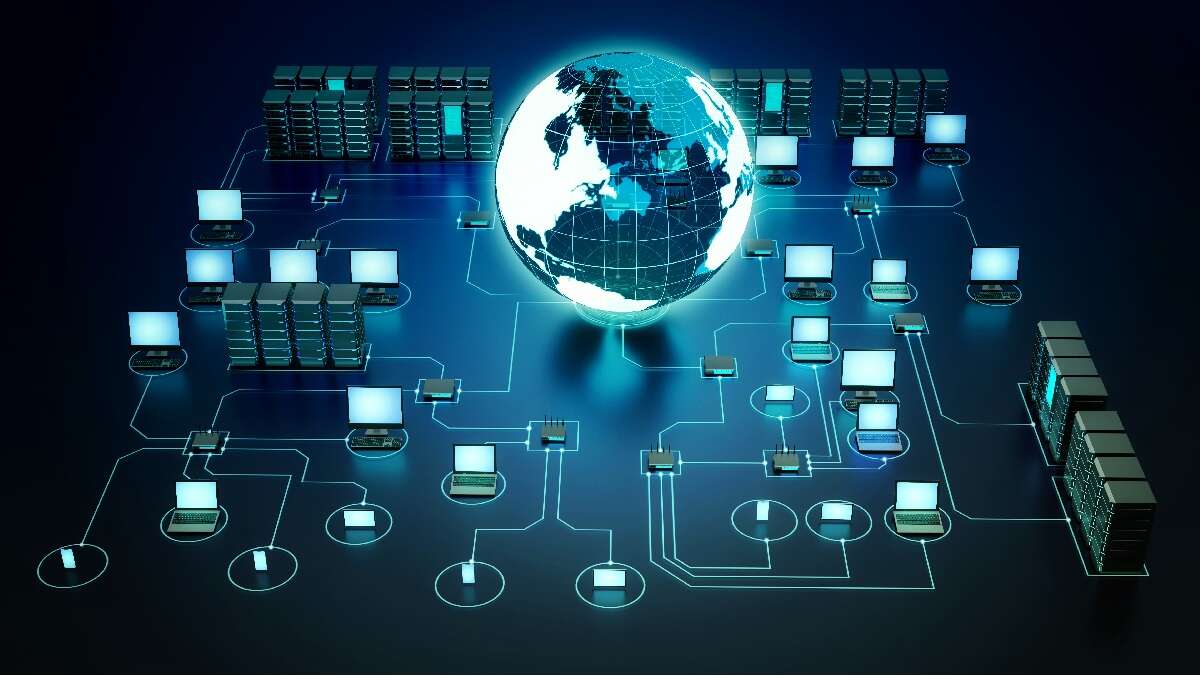
Topology is a widely used term. In particular, in the networking field, it is used to describe the layout of a computer network.
There are two kinds of networks: physical and logical, and topology can refer to both of them.

Table of contents
Definition of topology
The term network topology refers to the arrangements, either physical or logical, of nodes and connections within a network. It could be said that a topology explains how a network is physically connected, and how the information in the network flows logically.
Nodes are situated in a computer network, and they are physical networked devices, such as PCs and printers. These devices, consequently, recognise messages from other nodes and forward them.
In order to access the node, there must be an identification check – such as an IP address. Network topology helps to define the layout and structure of the network, which can have one physical topology, but also multiple logical topologies simultaneously.
There are a few differences between physical and logical topology. The former is the main component of a network, as it connects every node on the network to a central hub.
However, physical topology is how the device is actually interconnected through wires and cables. The latter, on the other hand, is how devices can connect to the user.
What are the different topologies?
In a computer network there are six main kinds of physical topologies:
- Bus topology
- Ring topology
- Star topology
- Mesh topology
- Tree topology
Bus topology is considered the simplest kind of physical topology, as it requires less cabling than others and it is very cost-efficient. However, it also has a few disadvantages, such as its limitations in the number of nodes that can be connected to it. It requires the nodes to be in a linear order.
In bus topologies, each device connects to a single cable, and they don’t transmit data bi-directionally: the data can only go from one end to the other.
The most widely used type of physical topology is hybrid. It is a computer topology that is a combination of multiple topologies. It has a very complex design and is quite expensive. In a hybrid topology, all topologies are interconnected in such a way to form a hybrid.
Therefore, it can handle a large number of nodes and it is very reliable, if one node fails it won’t affect the whole network. Another disadvantage is that it requires a multi-station access unit (MAU), which is a wiring concentrator (passive hub) used in Token Ring networks. Maus is the core wiring component for building both Token Ring local area networks (LANs) and direct traffic from one station to the next.
Some other types of topologies are:
- point-to-point topology
- daisy chain topology
Selecting the right topology can improve both data efficiency and performance, as well as reduce operational costs.
How is network topology used?
One of the principal uses of network topology is to determine and define the configurations of different communication networks, such as computers and radios. In other words, network topology helps the user understand two things:
- the different elements of the network and where they connect
- how the elements of the network interact and what can be expected from their performance
Topology is important for businesses, as it allows for a smoother communication system. As such, it can help with noticeable financial savings. Even if not compulsory, topologies help establish better connections in the network. More businesses than ever depend on technology, and networking can get more complicated. This is how and where topology would be used: it gives users a plan, to have better oversight of all the components of the network.






